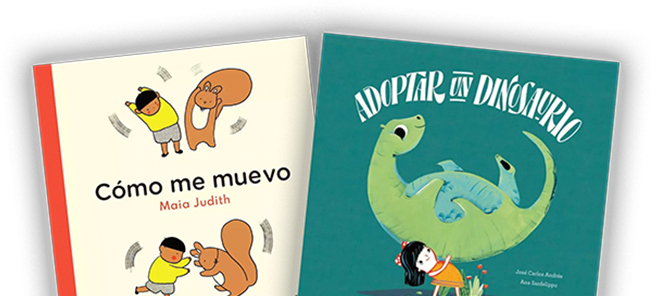
Immersion programs are a fantastic way to help children become fluent quickly. They develop a broader worldview while mastering the nuances of their second language in fun, engaging ways. If you want to help support your child’s language learning journey, there are some things you can do that make their experience even better.
We’ve come up with some of our favorite tips for supporting a language immersion student at home—even if you don’t speak the language yourself! And while we focus on helping kids learning Spanish at home, these suggestions apply to children learning any language beyond their first.

Read With Them
If you’re bilingual yourself, there are tons of opportunities for language exposure around the house. You can have dinner in their second language, or you read books to them in the target language. If you aren’t fluent, don’t worry. Bilingual children’s books are still fun to read together, and you’ll likely learn a lot from the stories, too!
For parents who aren’t confident in their pronunciation, here’s a suggestion: Search the name of a book on YouTube until you find a read-aloud video. There are hundreds of popular Spanish children’s books read by fluent speakers online. You and your little one can enjoy listening along with their own physical copy.
In addition to building literacy and fluency, bilingual storytime is also a great way to nurture a love of reading from a young age!
Encourage Them to Share What They’re Learning
Ask your kids about their favorite subjects, and listen intently as they explain. Ask them to tell you what they’ve learned in their second language, and tell them you want to learn from them! Kids will love being able to take the role of teacher and fill their parents in on how to pronounce new words and phrases.
Whatever subjects your child loves, you can also incorporate these into things you do at home. For example, a math-loving child can watch math videos in Spanish, while a budding scientist can try some experiments performed in their target language.
Embrace the Culture of Their Target Language
If your child is learning Spanish through an immersion program, don’t stop with words! Take Taco Tuesday to a whole new level by turning it into a day where you cook new Spanish recipes, listen to Spanish music, and practice as a family.
You can also take your child to authentic Spanish restaurants, watch Spanish TV shows and movies, and find Spanish children’s books that celebrate the diversity of Hispanic heritage.
Kids who get to encounter their language outside of school are more likely to build a stronger love for it. Experiences like these can turn the language into a real part of their lives.

Use Technology to Increase Their Language Exposure
Switch the apps they use to Spanish or another language, and watch as they instinctively begin to engage with it. If they’re a fan of video games, change the language when they play! They’ll still have just as much fun while learning plenty of new words along the way.
When it comes to videos online, why not let them watch age-appropriate content in their target language? It doesn’t all have to be about acquiring new words. You can let them watch videos about anything they like, whether it’s animals, space, dinosaurs, or music.
Help Them Develop Healthy Study Skills
When kids know how to study effectively, they’ll be less likely to experience frustration and those dreaded homework meltdowns. First off, we suggest reaching out to their teacher and asking how many hours of homework, on average, your student will have to complete a week. Then, ask them what types of assignments are most common.
Some teachers will rely more on pure writing exercises; others send home worksheets or use a textbook. Once you know what your child has to complete, it will become easier to tailor their studying to suit their needs.
For example, if you have a child who doesn’t love reading, but their teacher assigns 10 pages for the weekend, break it up into small chunks. Teach them to write some “brain notes” that help them easily review what they covered the next time they study.
Every child will have their own study style, but what you want to do is try and show them the benefits of being responsible with schooling. And whenever you can, make doing homework as fun as possible. It doesn’t have to be boring!

Ask Them to Show Off What They’re Learning
When your child is learning Spanish, they’ll have a lot of exciting new things to say every week. Unfortunately, many parents miss out on these discoveries, because once their child is at home, they only speak English.
For bilingual parents, make sure you have conversations in your child’s target language regularly. You’ll be amazed at how much they learn in a short period of time. And what’s more, you can build upon new things they discover by adding onto conversations. If they’ve recently learned about the four seasons in school, start teaching them vocabulary related to each one.
Non-speaking parents of bilingual kids can turn their children’s education into a fun learning opportunity. Applaud them for working hard to learn, and take interest in whatever they have to say. You can even ask them for short lessons so you can learn the language, too!
Keep Providing Experiences Outside of the Classroom
Language immersion programs are great, but they’re only one part of learning Spanish (or any other language!) Teach kids how to start applying what they learn at school into regular parts of their everyday lives. Maybe you commit to teaching the dog a few commands en español. Kids will get a kick out of being able to say their pet speaks Spanish.
Here are some other fun ideas to try:
- Put together a goodie bag with some language-infused treats, like a few Spanish children’s books. Then, send your child on a scavenger hunt in their target language to find it!
- Write a short story together in their target language, then act it out with their favorite stuffed animals.
- Go on a field trip to the zoo, then identify and count the animals in their second language.
- Give them a pack of Post-It notes and markers, then ask them to help out by labeling some of the important things around the house in their target language.
- Watch the dubbed version of their favorite movie. How about “Frozen” en español?
Embrace the Journey!
As your child grows, so will their language skills. For parents, seeing their children become more culturally mindful and inclusive is an amazing feeling. If you’re interested in teaching kids Spanish at home, why not sign up for Sol Book Box? We offer hand-selected Spanish children’s books for readers of all ages, delivered to your doorstep each month.




